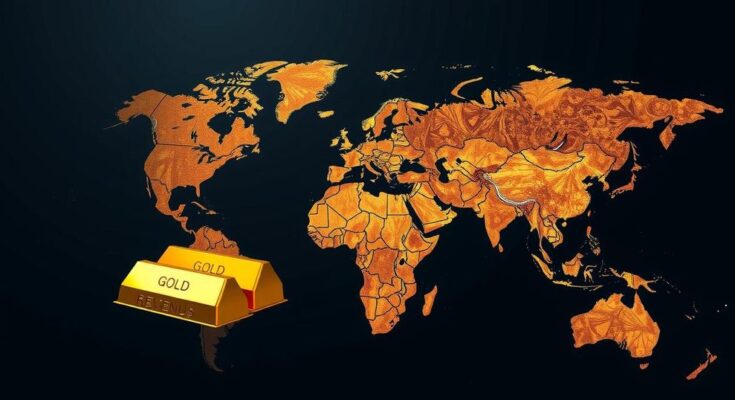The IMF is encouraged to sell 4% of its gold reserves, approximately $9.52 billion, to provide debt relief for low-income countries affected by climate change. Current CCRT funding is inadequate, covering only 30 nations. The sale would significantly enhance relief efforts, given the rising repayment burdens faced by vulnerable economies like Madagascar and Mozambique.
The International Monetary Fund (IMF) has been urged to sell 4% of its gold reserves to provide debt relief for low-income countries affected by climate-related disasters. A study from the Boston University Global Development Centre highlights the urgent need for increased climate financing as the COP29 summit commences. The IMF’s current Catastrophe Containment Relief Trust (CCRT) covers only 30 countries and is severely underfunded, totaling just $103 million. The research indicates that selling a fraction of the IMF’s 90.5 million ounces of gold could generate about $9.52 billion, offering substantial relief to 86 nations, particularly as gold prices have surged above $2,600 per ounce. The last significant sale of IMF gold occurred between 2009 and 2010, mainly to enhance the Fund’s lending capacity. There are growing concerns regarding the rising debt burdens on vulnerable economies, highlighting Madagascar and Mozambique’s increasing repayment obligations to the IMF. Any potential sale of gold would necessitate broad executive board support and a commitment from member states to allocate the proceeds to the CCRT, reinforcing its significance due to its lack of conditionality compared to other IMF lending programs.
The conversation around climate financing has gained substantial attention, especially in light of recent climate-related disasters that have disproportionately affected low-income nations. Countries such as those in the Caribbean and Africa have increasingly sought assistance from the IMF in recent years, particularly following global shocks like the COVID-19 pandemic. While the IMF established the CCRT as a possible relief mechanism, its limited reach and funding have left many at-risk countries vulnerable. The current economic landscape necessitates innovative funding strategies to aid nations grappling with unprecedented climatic challenges, making the proposed gold sale a focal point in discussions.
In conclusion, the suggestion for the IMF to sell 4% of its gold reserves presents a viable strategy to provide much-needed debt relief for low-income countries facing climate-related challenges. The potential revenue generated could significantly enhance the financial capacity of the CCRT, enabling it to support a greater number of countries. However, any action would require thorough approval from the IMF executive board and cooperation from member nations regarding the allocation of proceeds. Prioritizing climate resilience financing stands crucial for the sustainable development of these vulnerable economies.
Original Source: www.kitco.com




